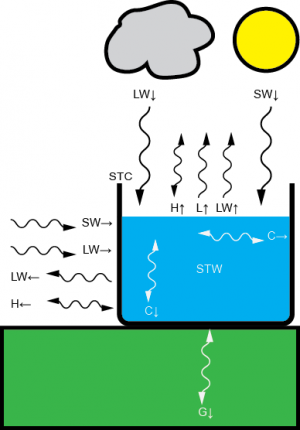WHATCH’EM
Modeling the population dynamics of dengue vector mosquito Aedes aegypti is often done using dynamic life cycle models that simulate the life cycles of cohorts of mosquitoes using a mechanistic approach.
Perhaps the greatest limitation of these dynamic life cycle models is the continued use of simplistic empirical relationships to predict water temperature in and water loss from containers based on several meteorological variables. In contrast, physics-based models solve for the energy balance of the water inside of the container, taking into account shortwave (solar) and longwave (terrestrial) radiation and heat fluxes (sensible, latent, and ground).
An energy balance container model developed by RAL scientists, termed the Water Height And Temperature in Container Habitats Energy Model (WHATCH'EM), solves for water temperature and height for user-specified containers with readily available weather data. Realistic estimation of water temperature and height from WHATCH'EM has potential to improve output from mosquito population models and aid in assessment of dengue risk.
Resources
